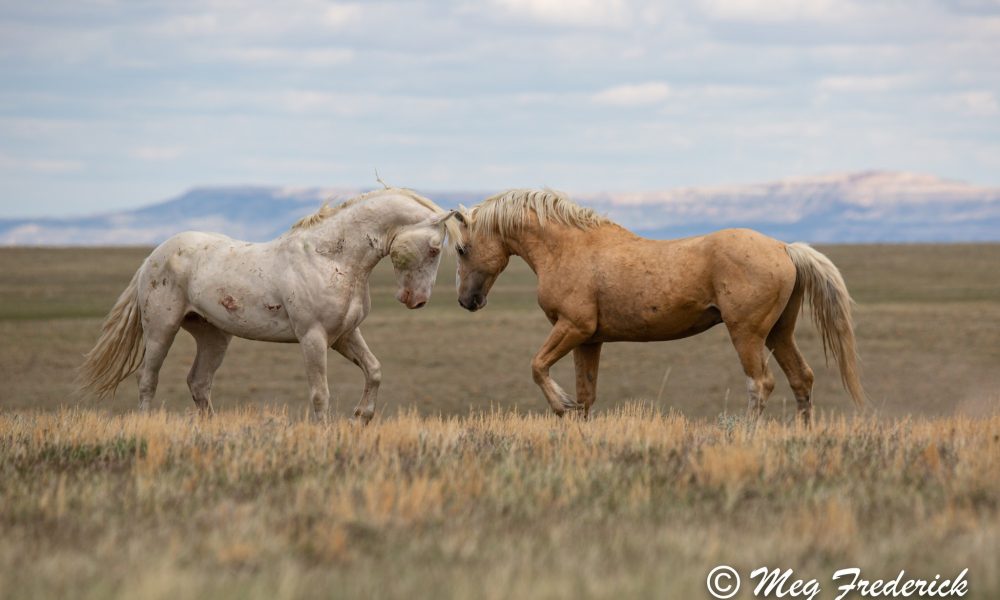

Today we’d like to introduce you to Meg Frederick.
Hi Meg, thanks for joining us today. We’d love for you to start by introducing yourself.
In 2011, I was hit by a drunk driver. I was unable to work and suffered constant pain. I had always loved photography and horses, so, in 2013, I attended a photography workshop at Return to Freedom’s American Wild Horse Sanctuary, a home for nearly 500 wild horses and burros on California’s Central Coast displaced by government roundups.
During the workshop, we were able to spend time among dozens of wild horses and learn about the challenges facing the herds still roaming our public lands. Since the 19th century, the number of wild horses roaming the rangelands of the West has fallen from an estimated 2 million to 86,000. Another 58,000 have been taken from their home ranges and family bands in government roundups. They now live warehoused in off-range holding facilities.
When I was with the horses at the sanctuary, I noticed that my pain went away, replaced by an overwhelming feeling of peace. Horses have a calm, healing energy about them. It was then that I knew I wanted to spend my life helping give wild horses a voice. The next year, I visited my first wild horse range and I’ve since started working at the sanctuary. I spend about seven months out of the year on the road, documenting the daily lives and interactions of wild horses.
Photography for me is capturing a moment in time when I feel the spirit of the animal. These are the moments I wait for in hopes that people will see my images, fall in love with wild horses as I have, and take action to help keep these living legends free.
Alright, so let’s dig a little deeper into the story – has it been an easy path overall and if not, what were the challenges you’ve had to overcome?
Wild horse advocacy has given me some of my most amazing moments and some of my darkest days. I have spent so much time with wild horses I feel they are a part of me. Advocates like me are losing the battle to save them, but we are not giving up.
In an attempt to control wild horse numbers, the Bureau of Land Management rounds up the wild horses using low-flying helicopters. Horses are chased long distances to a trap site. Once in the corrals, they are taken from their families and from all they’ve ever known. Stallions and their mares are separated. Foals are taken from their mothers’ sides. Most will spend the rest of their lives in off-range holding, with many of these symbols of freedom spending day upon day in dusty corrals.
On our public lands, 82.5% forage is allocated to privately owned livestock grazing, just 17.5% to wild horses and burros. Since the 1971 passage of Wild Free-Roaming Horses and Burros Act, more than 270,000 wild horse and burros have been removed from public lands. Meanwhile, private livestock grazing on our public lands costs American taxpayers more than $132 million annually in direct costs while providing less than 3 percent of America’s beef. Feeding captured wild horses in off-range government holding costs taxpayers more than $135,000 every day.
All of this is happening, year after year, despite the availability of safe, proven and humane fertility control that could slow herd growth, replace roundups as BLM’s primary management tool, and even save money over time. Seeing the freedom of frightened wild horses taken from them is heartbreaking, but it has made me even more determined to fight to keep them running free.
Thanks – so what else should our readers know about your work and what you’re currently focused on?
I am a wildlife photographer specializing in American Mustangs. My goal is to show as many people as possible not just the beauty of wild horses but the complex relationships and deep feeling within family bands and herds, all of them playing out against the rugged, remote landscapes of the West.
I am most proud of my accomplishments this past year. In 2020, the Bureau of Land Management rounded up nearly 1,800 wild horses on Wyoming’s Red Desert. Two family bands that Angelique Rea and I knew well from photographing them on the range were captured and ripped apart. Three of the foals were sent to an off-range holding facility elsewhere in Wyoming, where Angelique was able to adopt them at BLM adoption event. The adults were shipped to an off-range holding facility at a prison in Colorado. We were given just four hours, but we found the horses we knew among 2,000 others. Now, after a year apart, these wild horse families are being reunited in California at Return to Freedom’s American Wild Horse Sanctuary, and they will never be separated again.
Networking and finding a mentor can have such a positive impact on one’s life and career. Any advice?
Don’t hesitate to reach out to people whom you admire and who are passionate about what they do. I reached out to Neda DeMayo, Return to Freedom’s founder. She has spent the last 30 years in the battle for wild horses and educating people about the role that they can play in creating change. I now count her as a friend. I have learned so much about the wild horse issue, about being an effective advocate, about myself.
Horses have taught me a lot, too, during long days on the range. They have taught me about patience and showing my true self. Mustangs are intelligent and have the capacity to read energy. That energetic presence that we emit must be pure and authentic. While you are out with the wild horses, it is very important to be grounded. Horses are prey animals and will sense a higher energy as danger and will flee. The Mustangs have also taught me to let go of the past. The horses do not dwell on the past and live in the moment. These horses can fight one minute and graze peacefully next to each other the next. If only humans could learn how to forgive like these majestic animals. The Mustangs have also taught me to face challenges head on and become Mustang Tough. Now, I try to talk to as many people as I can about the challenges facing America’s wild horses and to share my photos and stories from the range with them. I especially hope that I will be able to inspire young people to join the fight for the future of wild horses.
Contact Info:
- Email: [email protected]
- Website: www.megfrederickphotography.com
- Instagram: instagram.com/megfrederickphotography
- Facebook: https://www.facebook.com/MegFrederickPhotography
- Twitter: https://twitter.com/wildhorsepics








Image Credits
Meg Frederick Photography














